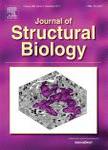版权所有:内蒙古大学图书馆 技术提供:维普资讯• 智图
内蒙古自治区呼和浩特市赛罕区大学西街235号 邮编: 010021

作者机构:Chinese Acad Sci Inst Microbiol CAS Key Lab Pathogen Microbiol & Immunol Beijing 100101 Peoples R China Univ Chinese Acad Sci Beijing 100049 Peoples R China Univ Chinese Acad Sci Savaid Med Sch Beijing 100049 Peoples R China
出 版 物:《JOURNAL OF STRUCTURAL BIOLOGY》 (结构生物学杂志)
年 卷 期:2019年第206卷第3期
页 面:322-334页
核心收录:
学科分类:0710[理学-生物学] 07[理学] 09[农学]
基 金:Strategic Priority Research Program of the Chinese Academy of Sciences [XDA17010503] National Natural Science Foundation of China Science and Technology Service Network Initiative [KFJ-EW-STS-078]
主 题:3-Deoxy-D-arabino-heptulosonate-7-phosphate synthase (DAHP synthase) Escherichia coli Crystal structure Aromatic amino acid biosynthesis Feedback inhibition Allosteric regulation
摘 要:3-Deoxy-D-arabino-heptulosonate-7-phosphate synthase (DAHPS) is responsible for the biosynthesis of essential aromatic compounds in microorganisms and plants. It plays a crucial role in the regulation of the carbon flow into the shikimate pathway. Until now, the crystal structures and regulatory mechanisms of dimeric DAHPS enzymes from type I alpha subclass have not been reported. Here, we reported dimeric structures of the tyrosine-regulated DAHPS from Escherichia call, both in its apo form and complex with the inhibitor tyrosine at 2.5 and 2.0 angstrom resolutions, respectively. DAHPS(Tyr) has a typical (beta/alpha)(8) TIM barrel, which is decorated with an N-terminal extension and an antiparallel beta sheet, beta 6a/beta 6b. Inhibitor tyrosine binds at a cavity formed by residues of helices alpha 3, alpha 4, strands beta 6a, beta 6b and the adjacent loops, and directly interacts with residues P148, Q152, S181, 1213 and N8*. Although the small angle X-ray scattering profiles from DAHPS(Tyr) with and without tyrosine shows that tyrosine binding leaves most of DAHPS(Tyr) structures unaffected. The comparison of the liganded and unliganded crystal structures reveals that conformational changes of residues P148, Q152 and 1213 initiate a transmission pathway to propagate the allosteric signal from the tyrosine-binding site to the active site, which is different from DAHPS(Phe), a phenylalanine-regulated isozyme from E. coli. In addition, mutations of five tyrosine-binding residues P148, Q152, S181, 1213 and N8* leads to tyrosine-resistant DAHPS(Tyr) enzymes. These findings provide a new insight into the regulatory mechanism of DAHPS enzymes and a basis for further engineering studies.